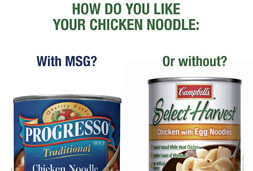7 Types of Propaganda Techniques Advertisers Use

Have you ever felt like you were being manipulated to do something?
You probably were.
There is always the chance that it was all in your head, and you just felt like you were being used. But it is not unlikely that someone made use of your emotions to get something they needed.
It makes sense if someone you know personally was able to do that but did you know strangers often manage to influence you too?
It’s true! How?
Through propaganda in advertising.
In this blog post, we’re going to discuss 7 types of advertisement propaganda and how it is often used to manipulate your buying decisions.
But first:
What Exactly Is Advertising Propaganda?
To answer this question, let’s first recall what propaganda means. Propaganda is information that is biased or is used in such a way that it misleads the targeted individual, in turn motivating them to think or act a certain way.
Propaganda in advertising is just the same – it is the careful presentation of information in a way that influences how a customer or potential consumer sees the product or service and how they act, think or feel as a result.
What does the advertiser achieve by doing this?
This should be a no-brainer – they want to encourage you to buy their product or service as opposed to any other. And they achieve this by playing with your emotions to get the desired outcome.
So how do they do it?
To be clearer:
What are the 7 techniques of propaganda that they use?
Read on as we discuss all seven of them in this blog post.
Click Here if you would like to know about Local SEO Marketing
1. Card-Stacking Propaganda
Probably the most common of the propaganda techniques top advertisers use today is card-stacking propaganda.
Consider this:
You are at a job interview and the interviewer asks you to tell them about yourself.
Do you tell them all the good qualities and traits that make you who you are and improve how they see you professionally? Or do you lay all the negatives out on the table?
Of course, you do the former.
That is exactly what an advertiser does through card-stacking ads. In such an advertisement, an advertiser omits any information that may affect their image negatively and includes just that information that will lure you into the trap.
Ok, we might have made it sound a little too grim.
But it is true – they do essentially influence you to buy the product or service based on the information they have presented you with. How? They make the product appear a lot more attractive than it actually is.
They also make the product seem more attractive than similar ones in the market.
Why is this wrong?
Because you may not have made the purchase had you known the entire picture.
Let’s look at some examples of card-stacking.
This ad uses stats to portray why the product is healthy. It implies that Sun Chips are better than ‘regular chips’ because they contain 30% less fat than said chips.
But what if the amount of fat in regular chips is so high that 30% less is still very dangerous for you?
You won’t go and check the nutritional value on the back of the packet – the ad will have convinced you to buy the product and potentially cause harm to your body.
Let’s look at another card-stacking example:
Again, how is the product 50% stronger than Mr. Clean Magic Eraser Original?
What if the original version of the product had a horrible performance and a 50% improvement isn’t really much at all?
But the words ‘50% stronger’ are all that caught your eye and they will likely influence your buying decision.
You will be interested in our Social Media Services
2. Name-Calling Propaganda
Have you ever had an archenemy at school?
Or a rival at work that you just have to beat at everything you both do?
If you have ever been in a similar situation to the two we have mentioned above, you will know that at some point, you have both resorted to name-calling.
And although you are not proud of it, you acknowledge that portraying the other person negatively in comparison to yourself made you come out on top and appear to be the better person/student/professional.
Name-calling advertising is the most common between two brands that are similar, well-known, and have a loyal fan base. Understandably, they need to lure consumers from the other side to their side.
Some examples include Coca Cola and Pepsi, McDonald’s and Burger King, and so on.
So how exactly does an advertiser influence you with name-calling propaganda without portraying themselves as harsh and mean?
Let’s look at a few ads so you can understand better.
This is quite self-explanatory. Although the name of the rival brand (McDonald’s) is not found anywhere in the ad, their signature Big Mac box has been used.
And the message is clear: The Whopper is so big that it can’t fit into the box that holds the Big Mac. So basically, you are getting a bigger burger than the famous Big Mac.
Sly.
And also with a humorous undertone so that people take it in a light way.
Let’s look at another one:
Everyone knows that MSG is bad for your health. And Select Harvest could have promoted the fact that their chicken noodle is free from MSG. But they didn’t do that.
Instead, they dragged their competitor down by informing consumers that their product has MSG.
Further, they asked you a question and made you choose, emphasizing that you are responsible for making a healthy decision when it comes to food.
And that is what you will do by choosing Select Harvest!
3. Bandwagon Propaganda
Did you ever get bangs because all your friends were getting them? Even though you knew they won’t look so great on you?
Or you must have agreed that a certain teacher was awful because the entire class thought so, even if you thought you learned a lot from them.
That is the mentality this kind of propaganda aims to exploit.
If everyone is dining at Pizza Hut, it must be great, even if you think they could use more sauce.
If everyone at your high school is going to a party, you have to go too, even if you know it may get wild and you would much rather stay away.
Advertisers know that it is human nature to not want to be the one left out. They know that if they convince you that everyone else is buying their product or using their service, you will want to ‘jump on the bandwagon’ too.
What do advertisers do with this information?
They use it to their advantage.
Let’s look at an example of this:
This is a classic bandwagon propaganda advertising example.
After all, if they’ve served 99 billion, there must be something special there, right? And who would want to miss out on that? So instead of just driving past and honoring the no-fast-food promise you made to yourself, you stop and grab a meal on your way home.
Let’s look at another one:
A million of your countrymen have tried toothpastes by this brand (this advertisement is obviously targeted towards Australians). Don’t you feel left out?
Well, if you hadn’t before, you do after you see this ad. And an Oral-B toothpaste finds its place in your shopping cart on your next grocery trip.
4. Testimonial Propaganda
If a dentist talks to you about a toothpaste and all the benefits it offers you, you are going to take them more seriously than if a random person recommends it.
Similarly, if a celebrity with beautiful hair endorses a shampoo or hair oil and tells you it is the reason for their beautiful locks, you will most definitely believe them and go out and buy it.
This is basically the testimonial propaganda definition in a nutshell.
Advertisers use the testimonials of influencers, authority figures, or experts in the field to convince you that their product is worth your money.
This is mainly because if a famous person or one who has a lot of knowledge and experience in the niche is vouching for it, there has got to be something that sets it apart.
And that is something that makes you go for it, making these kinds of messages some of the most common propaganda advertisements that are used today.
Adam Levine has great skin. One look at his face is enough to tell you that.
He is also a huge superstar with a massive following.
So when he says that a skincare product will treat your acne AND take care of your skin at the same time, you are going to take him seriously.
This was an example of a celebrity endorsing a product. Now let’s look at one in which an expert in the field recommends one:
Nike wants to sell a ball.
Nike knows that its target audience is mostly young sportspersons, many of whom look up to Wayne Rooney, a famous soccer player who is known around the world.
Even if they don’t, they acknowledge and admire his skill on the field and deem him an expert in all things soccer. So they are definitely going to want to buy a ball that Rooney is holding out and referring to as ‘The world’s best ball.’
5. Transfer Propaganda
This is a technique in which an advertiser tries to ‘transfer’ the good or bad feelings you have associated with something to their brand, product or service.
Confusing?
Look at it like this:
You see an ad about a food chain. It doesn’t move you, nor does it make you particularly hungry and you are about to move on with your life. Just then, it mentions that all the ingredients used by the brand are organic.
If you are a supporter of organic foods, this will call out to you in a way no other message could have. And you will associate the positive feelings you have about organic food with the brand.
Similarly, if an ad uses a national song, the flag of your country, or any other element that awakens the love you have for your country inside of you, your patriotism will take over.
You will associate the feeling of love you have for your country with the brand and that will, of course, improve its image in your eyes.
You’ll understand this better with some transfer propaganda examples.
In this advertisement, the advertiser tells the consumer that this is the ‘real American fragrance.’
What does this do?
It implies that if you buy it, you are a true American.
And if you don’t?
Well, the rest is self-explanatory.
The use of the flag in the background obviously helps matters.
Let’s look at another one:
Any sane person has a very strong feeling attached with Hitler – a feeling of immense hatred. And that is what this advertisement tries to cash in on.
The message is clear: if you are riding in a car alone, it is as if you have Hitler in the car with you. And no one wants that.
In this way, the viewer is encouraged to join a car-sharing club.
6. Glittering Generalities Propaganda
All that glitters is not gold.
But you often come to that conclusion when it is way too late.
The glittering generalities technique makes use of fancy words that elicit a positive response or feeling from you. In turn, this feeling is what makes you want to buy the product, try the service or become affiliated with the brand.
Some examples of these ‘glittering’ words include hope, change, possibility, justice, and others that give off an extremely positive vibe or hype you up among other things.
Do the products or services always do what they say?
Not always.
But the advertiser achieves what they set out to do: to influence your buying decision by triggering a positive reaction to a word.
Here are two great glittering generalities propaganda advertising examples:
The use of the word ‘better’ in this ad is what triggers a positive reaction.
We are always looking for ways to make things better, make experiences better. And that is what this ad promises. And it doesn’t even stop at food – it isn’t even mentioned.
So anything, ranging from a pizza to a movie to a day out gets better with a Coca Cola.
Let’s look at an example of another beverage – coffee.
There is no mention in this ad of how the coffee is better than the rest, what sets it apart, why it’s special, and so on. All you’re told is that it is the ‘best’ coffee.
But that’s not all:
It goes on to say that drinking this coffee makes you the best version of yourself.
And who doesn’t want to be that, right?
Click Here if you would like to know about Facebook Advertising
7. Plain Folks Propaganda
This approach is increasingly becoming one of the more effective propaganda devices you can come across today.
Many people nowadays crave real experiences.
When applied to advertising, this basically means that they want to see how a particular product or service brought value to a regular human being like themselves.
In other words, this is quite the opposite technique to testimonial propaganda where a celebrity, a decision-maker or an influencer is trying to tell you to choose something over the other.
You can relate more to the experiences of people like yourself. Because after all, you are likely to have a similar experience with a brand as people who you have something in common with, as opposed to someone with a completely different life, such as a celebrity.
So take a look at this.
Why is it an example of an ad making use of the plain folks technique? Well, because the mother-child duo with a shopping cart is the perfect example of regular folks indulging in regular activity.
Any mother who has ever done grocery shopping with their little one can relate to this picture – they see themselves in it.
Paired with the promise of saving money on groceries and gaining the ability to spend it elsewhere to improve the quality of your life, it is the perfect message.
Final Words…
Whether an advertiser makes use of propaganda commercials or a print or digital ad among other things, they are using some sort of technique to manipulate you and influence your buying decisions.
This fact remains the same, no matter which propaganda types they use.
So be aware, remain careful, and choose wisely.
Do you think we have missed an important propaganda device?
Tell us all about it by commenting below!



















Thx a lot this helped me with my English homework
same
same
same
same
Good day!
Ma’am, can I use the picture in your blog in the making of Self-Learning Module? Hope to hear you soon. Thank you…
Yes you can!
Thanks for posting such an informative article. It’s really a great help to the innocent buyer who get fished in with advertising propaganda.
Can i get the date this article was published so i can cite it for a paper?
Taylor, this article was published on 11 Jun ’19. It has been updated twice since then.
thanks for this informative topic about propaganda.
Thank you for such a great introductory article on the 7 basic propaganda techniques. I do plan on using your information to help my students out. I did not copy anything, but I am sure my students were able to use some of your information for my assignment on propaganda techniques.
Thanks David for the kind words.
Wow ! This is what I really need. Can I use some of the pictures and also some of the contents in the self learning module that I am developing which is NOT for commercial use? I earnestly hope for your positive response. More power!
Sure Cheryl. Kindly link out to this blog if you can. Cheers